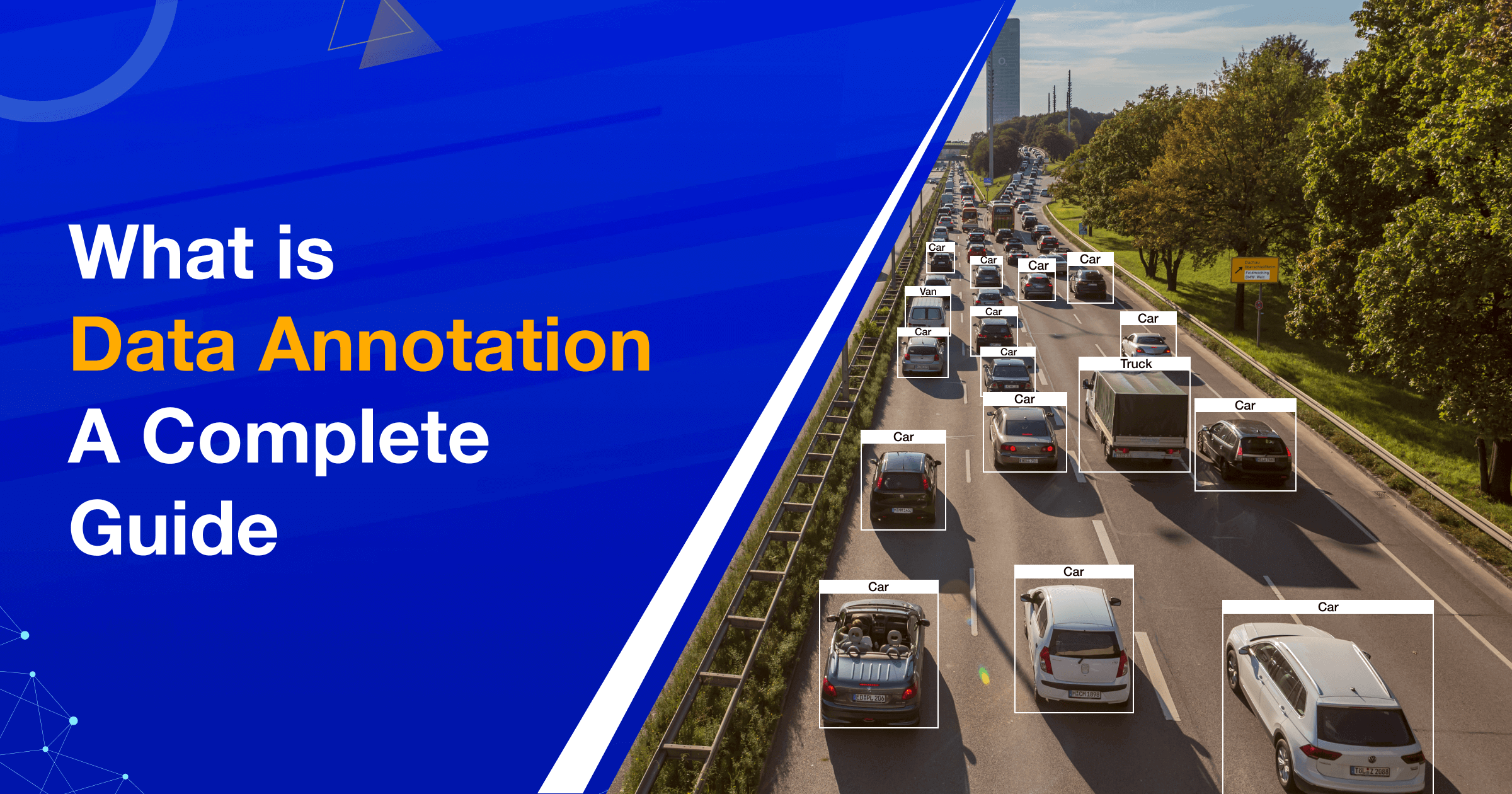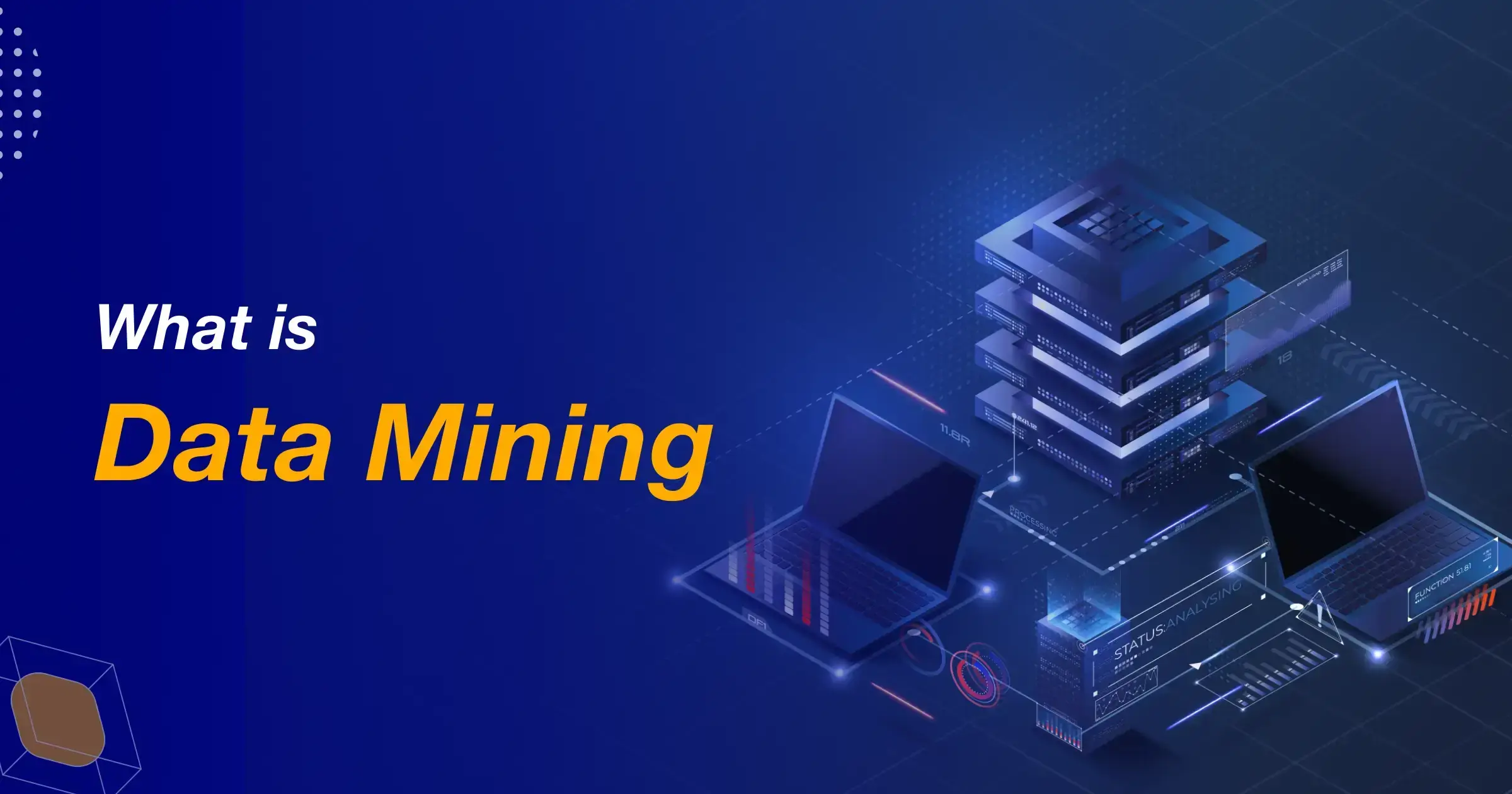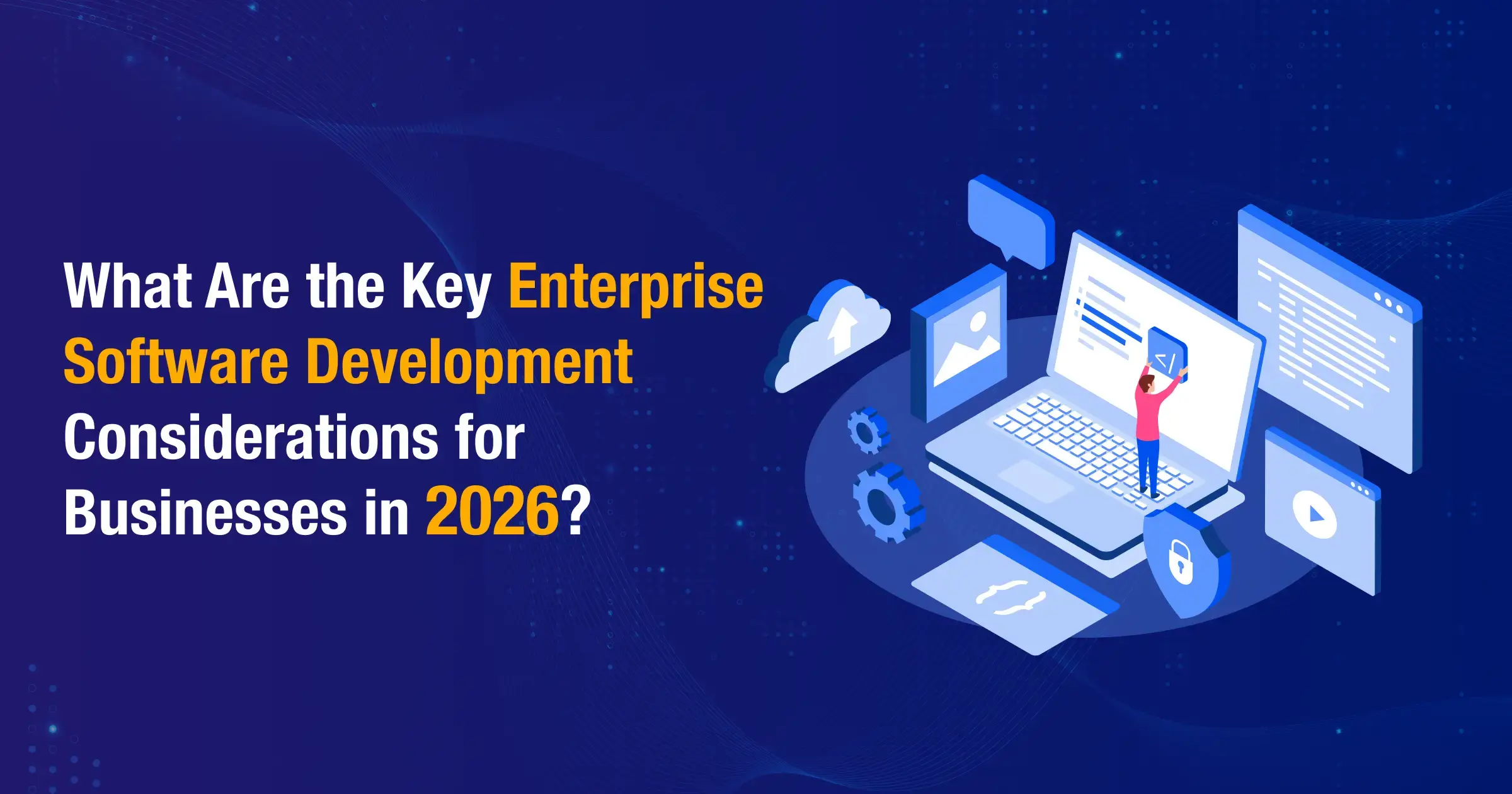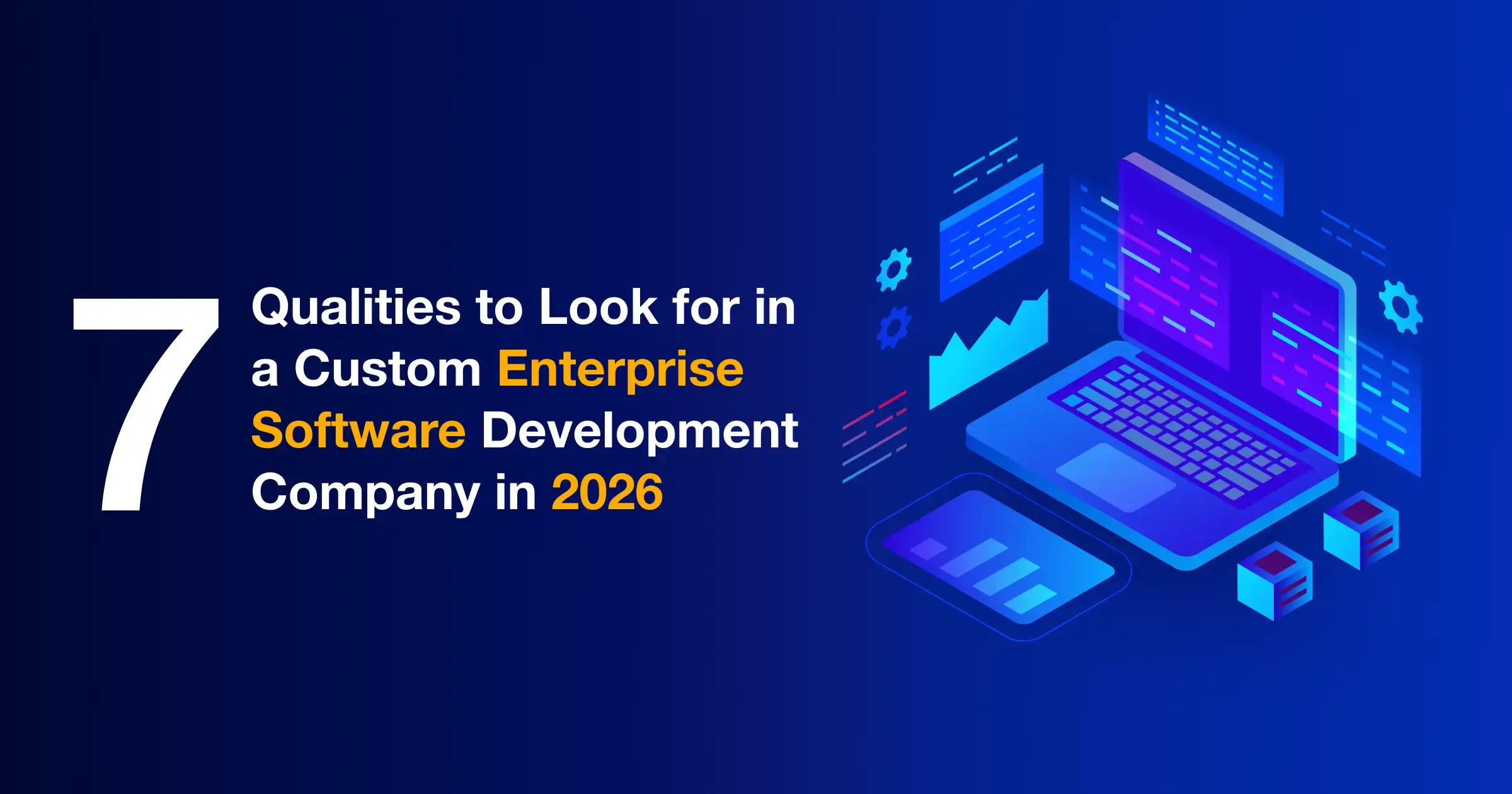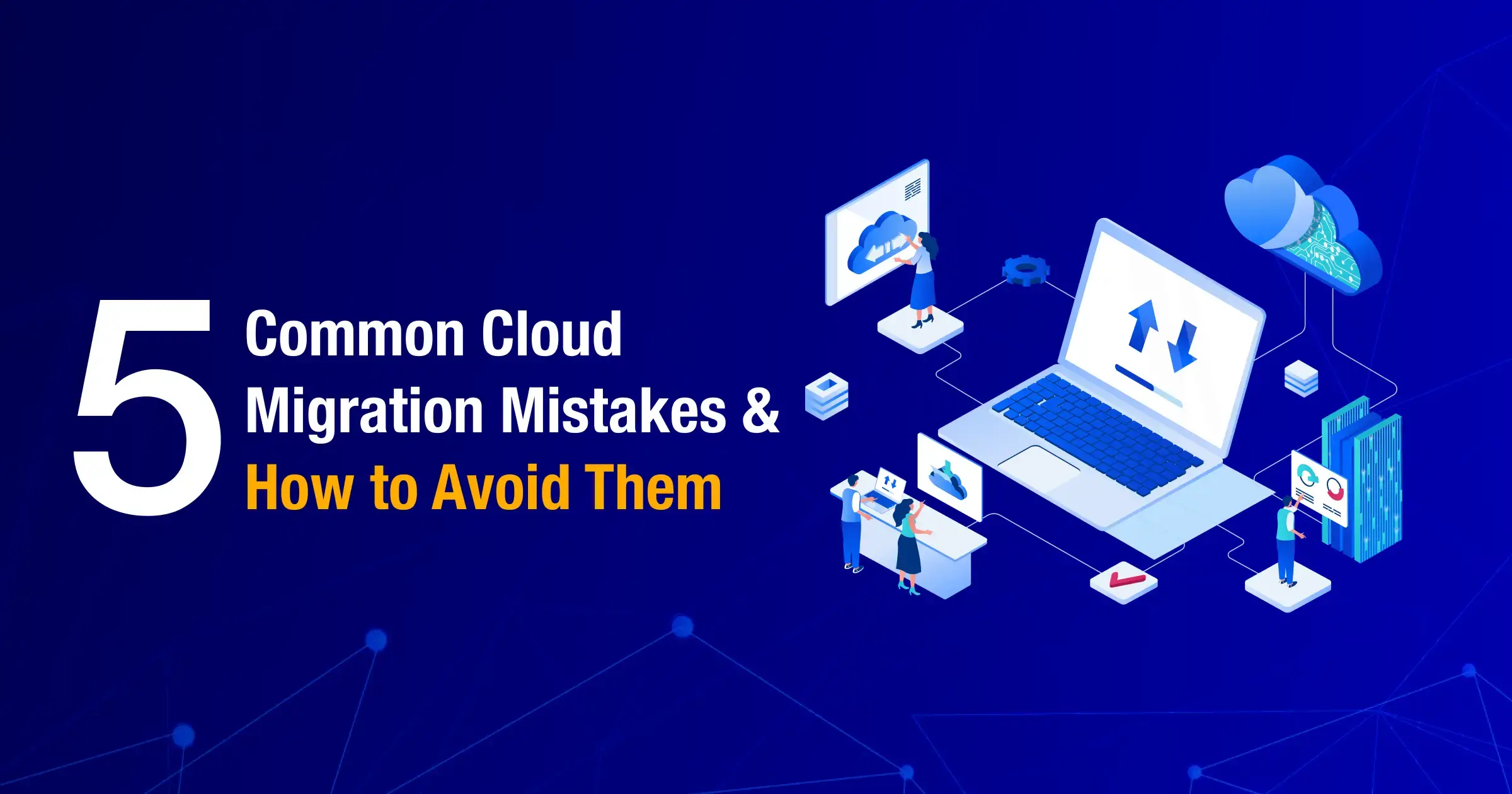
Artificial intelligence plays a pivotal role in redefining the ways businesses traditionally function. What was once seen as a distant, nice-to-have value addition is now a must-have feature in any business.
Yes, we are talking about AI and its various functionalities, from deep learning and NLP to computer vision and AI agent automation.
This blog is dedicated to discuss in greater depths about how AI reshuffles the entire business landscape, while delving deeper into understanding AI and its subsets, its benefits and challenges, different industry use cases, and many more.
What is Artificial Intelligence and How Does It Power Transformation?
Artificial intelligence is all about making machines smart. Not just smart in the way of doing calculations or storing data, but smart in a way that mimics how humans think, learn, and make decisions.
It is obvious but important to note that AI systems don’t get tired. Nor do they lose focus. It is because of this ability and computing capability that AI has potential to mimic humans and even surpass us in many tasks.
They essentially look at data and find patterns that most people would miss, and that’s what makes them so valuable to businesses today.
Now, let’s break this down a bit. When we talk about AI in business, it does not mean some far off, futuristic tech concepts like robots doing all the work, replacing humans.
Without many people knowing explicitly, AI has already been used in many organizations and industries. It is already being used to improve how companies work every day.
Let’s go back and imagine the days before the internet. No one would have thought that they would be able to send a message half way across the globe and receive a reply the same day.
But the internet has made that possible along with tons of new possibilities. Now AI is similar to that. What may seem now as a distant dream or even an inconceivable possibility will soon become achievable with the immense power of artificial intelligence services.
AI enabled businesses to save time, function with precision, act smarter, and take every step backed by data. It helps remove the guesswork from big decisions and turns data into strategy. It transforms how companies operate from the inside out.
What are the Subsets of Artificial Intelligence?
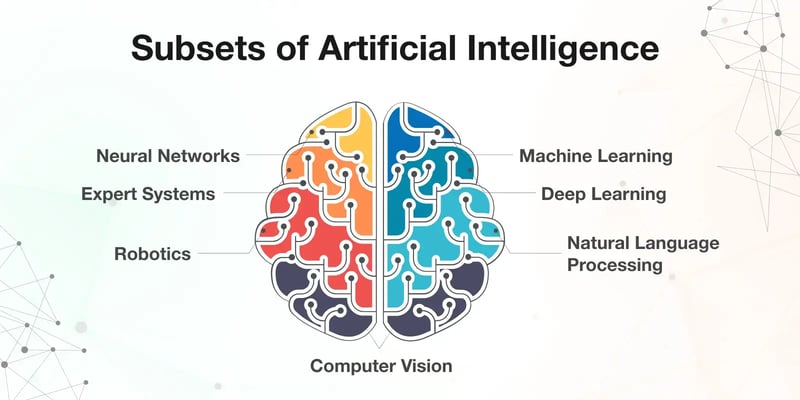
To understand how AI impacts businesses and their day-to-day operations, it becomes highly crucial to learn about the subsets of artificial intelligence. It is common that people often use different AI terms interchangeably, but each one has a specific functionality and purpose.
The subsets of artificial intelligence are:
What is Machine Learning?
Machine learning is a type of artificial intelligence, which helps computers learn from data and make decisions, all without human inputs and being programmed step by step. It finds patterns in large sets of data, using which it finds patterns within data and helps solve complex problems. The more data it gets, the better it performs.
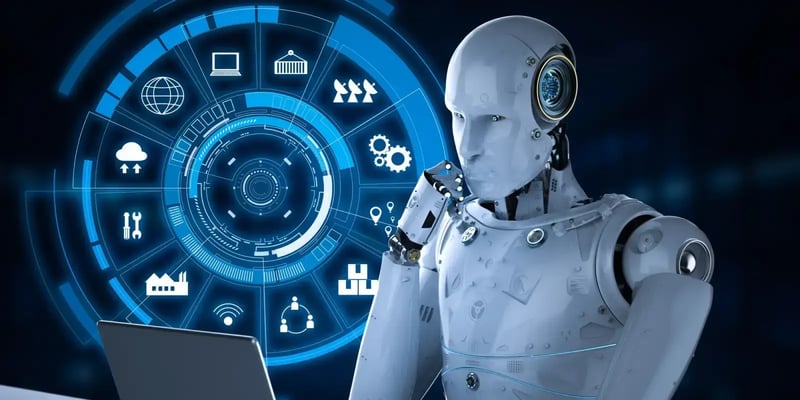
To put it simply, machine learning is pretty much similar to teaching a system how to learn from data, examples, and experiences. You feed it data, and over time, it figures out patterns on its own.
It doesn’t need to be told exactly what to do. Instead, it learns from examples. If you wonder what makes recommendations, fraud detection, demand forecasting, and many other AI use cases possible, it is machine learning services that make all of them possible.
Businesses typically use ML when they want to predict outcomes or personalize services at scale.
- Learns from past data to make future predictions
- Improves over time with more data
- Reduces the need for manual rules or programming
What is Deep Learning?
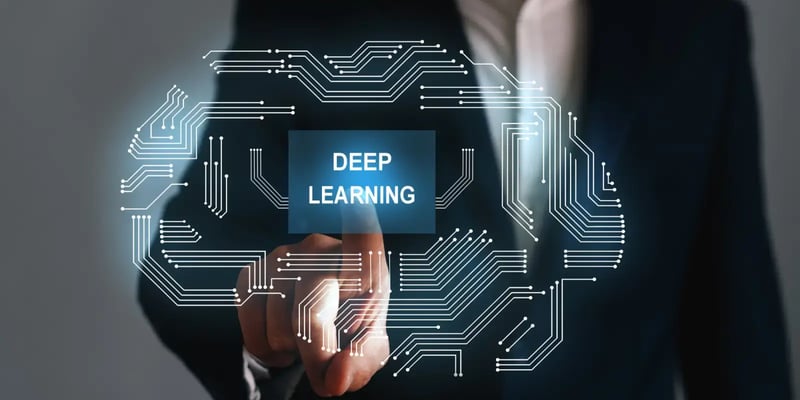
Deep learning is a type of machine learning that uses layered networks to learn from data. It is a deeper approach in a rather broader field of machine learning. It can handle complex tasks like recognizing images, understanding speech, analyzing video, and many more. The more layers it has, the better it gets at spotting patterns.
Deep learning is a special type of machine learning, which uses structures called neural networks that are inspired by the human brain. These networks are comprised of many layers, which is why it’s called “deep.”
This allows the system to understand and process very complex data like recognizing faces in a photo or understanding speech. What’s more interesting is that deep learning works well even when the data is unstructured.
- Works well with huge datasets
- Used for speech recognition, image tagging, and self-driving cars
- Learns multiple layers of features on its own
What is Natural Language Processing (NLP)?
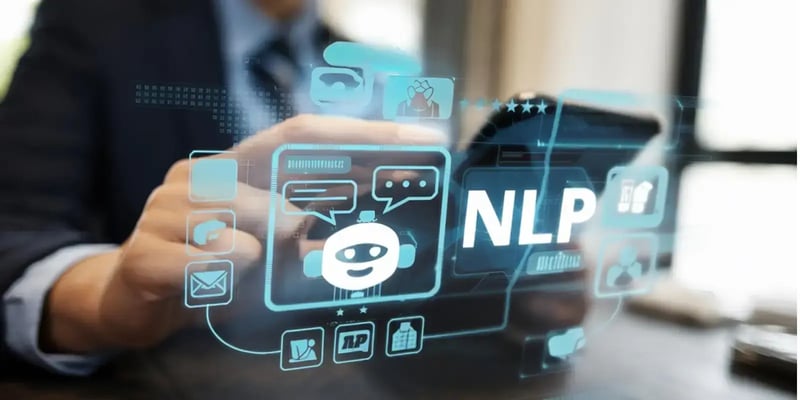
Natural Language Processing (NLP) is a subset of AI that enables machines to understand and comprehend human language, along with its nuances and complexities. It helps computers digest human language and produce output like people do. This makes it useful for chatbot development and voice assistants, and forms one of the crucial components of generative AI.
Natural Language Processing, or NLP, fundamentally gives machines the ability to understand human language. That means it can read, listen, or write text like we do.
It doesn’t stop at the surface level but goes deep in helping machines understand the complexities of human language like sarcasm, same words with different meanings, etc.
This is what powers AI tools like chatbots, virtual assistants, translation apps, and sentiment analysis. NLP has a variety of use cases across different industries, from healthcare to intelligent document processing (IDP).
- Understands spoken or written language
- Helps automate support, content analysis, and communication
- Can detect emotions or intent in conversations
What is Computer Vision?

Computer vision is a type of AI helping machines understand visual data like images and videos. Like how NLP enables computers to comprehend human language, computer vision helps them understand visual data and can spot objects, read text, and track movement. This lets computers virtually “see” and make sense of the visual world.
Computer vision technology helps machines make sense of visual input, which includes image, video, etc. It is like giving them sight, although it works in a different way than human eyes. It processes images and videos to identify objects, people, scenes, or even actions.
It has a variety of use cases in business, for instance, in manufacturing, it spots defects, in retail, it tracks shelf inventory, and in healthcare, it reads scans.
- Analyzes images and video for patterns or objects
- Supports tasks like face recognition and visual inspection
- Often paired with deep learning for better accuracy
What is Robotics?
Robotics is the field where machines are assembled and built to make them move and act in desired ways. When powered by AI, these machines can learn, make decisions, and perform tasks on their own, which often involves physical activity. They are often used in factories, warehouses, and hospitals, where the nature of work is dangerous, harmful, or routine and mundane.

Robotics combines AI technology with physical machines. These are robots that can move, act, and sometimes even think in real time. When robots are powered by AI, they can easily adapt to changes in the environment, learn from their actions, and make decisions without needing constant control.
- Merges physical action with intelligent software
- Can handle repetitive or dangerous tasks
- Learns from surroundings and adapts behavior
What are Expert Systems?
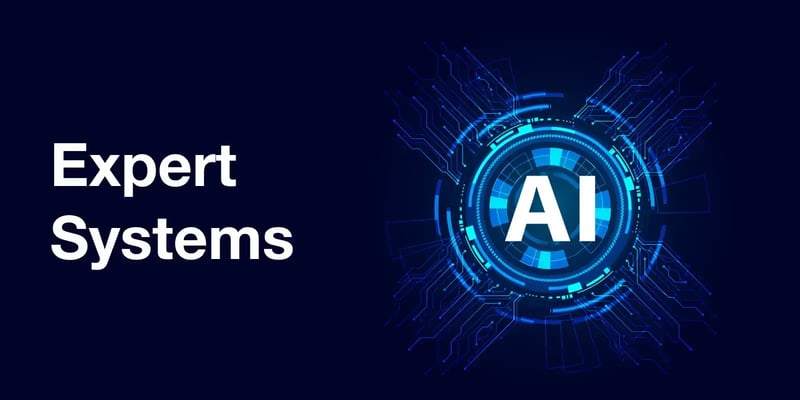
Expert systems are specialized AI programs that can solve complex problems by using a set of rules and knowledge from a specific field like medicine or finance. They act like human experts by giving advice or making decisions based on logic. These systems are used in specialized areas like healthcare, law, and engineering where expertise is highly required.
Expert systems are fundamentally built to mimic the skill and decision-making ability of a human expert. They typically use a set of rules and deep core knowledge to solve problems in a specific domain.
These systems are useful in areas where you need deep, structured knowledge like diagnosing diseases, giving legal advice, or configuring complex machinery. They follow logic and reasoning, in addition to data patterns.
- Uses a fixed set of rules or knowledge base
- Designed to act like a human specialist
- Ideal for decision-heavy environments
What are Neural Networks?
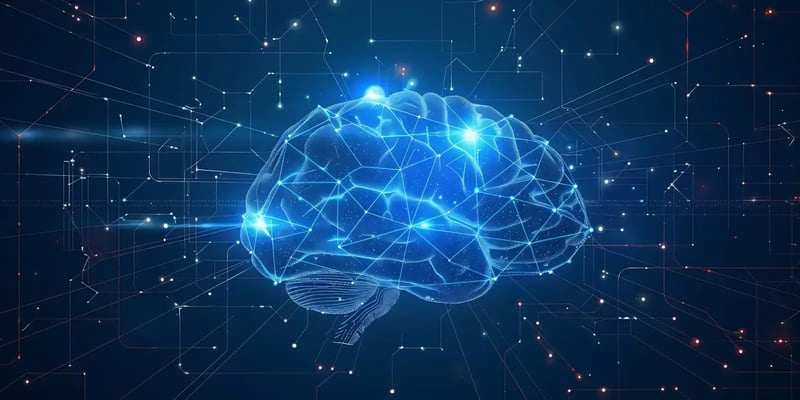
Neural networks are specialized types of machine learning algorithms that learn by passing data through layers of connected nodes, pretty much resembling the human brain. Each layer in neural network finds patterns and passes the results to the next. This helps machines make sense of complex data and assists them with reasoning.
We can say neural networks form the building blocks of deep learning. They are designed to process data in a layered way, just like how our brain’s neurons work.
To process the complex information, each node in the network comes into play as they process a bit of data and pass it forward. This makes them great for spotting patterns and relationships that are too complex for humans or traditional software to understand.
- Structured like a web of connected nodes
- Useful for finding hidden patterns in complex data
- Often used in financial modeling, image recognition, and forecasting
How Does AI Enable Operational Efficiency?
Every business hinges on being efficient to unlock new possibilities. This is where AI makes a serious impact. AI in business does more than simply automating repetitive tasks by making every part of your operation faster, smarter, and much more precise with data-driven. Here’s how it works when you really dig into it.
It Gets Rid of Slow, Manual Steps
Every business has steps that take too long or rely too much on human input. Maybe it’s data entry. Maybe it’s reviewing documents. These tasks slow down operations. AI handles them faster. But the real value isn’t just speed.
It’s consistency. AI doesn’t get tired, bored, or distracted. That means fewer mistakes and cleaner outputs. You free up your team to focus on work that requires judgment and creativity—things machines still can’t do well.
It Predicts Problems Before They Happen
Think about a factory where a machine breaks down without warning. That stops everything. AI can prevent that. Predictive maintenance uses data from sensors and past breakdowns to spot early signs of wear.
It tells you when to act before a failure happens. This saves time and money. You don’t need to pause production for surprise fixes. And you avoid over-maintaining equipment that’s still in good shape.
It Keeps the Supply Chain on Track
Supply chains are complex. There are too many moving parts for one person to track—inventory, weather, demand, fuel costs, delivery schedules. AI takes all that data and turns it into clear actions.
It forecasts demand, adjusts inventory, and reroutes shipments when something changes. The result? Fewer delays. Less waste. And faster delivery to customers. The entire chain becomes more responsive and less fragile.
It Rethinks Workflow from the Ground Up
AI isn’t just about automating what already exists. It can redesign how work gets done. For example, in finance teams, AI handles invoice processing end to end—from reading the document to updating the ledger.
No human touch needed unless something looks off. This lets teams close books faster and with fewer errors. The same thinking applies in HR, legal, and customer service. Workflows get re-engineered to move smoother and smarter.
It Connects the Dots Across Departments
One overlooked strength of AI is its ability to break silos. Most teams work in isolation—marketing, sales, operations, IT. AI systems can pull data from each of these and find relationships humans would miss.
It can tell you how a small change in inventory affects customer wait times, or how marketing campaigns impact supply needs. This makes cross-functional planning stronger. It’s the kind of insight that helps you stop reacting and start predicting.
How Does AI Impact Decision-Making in Business?
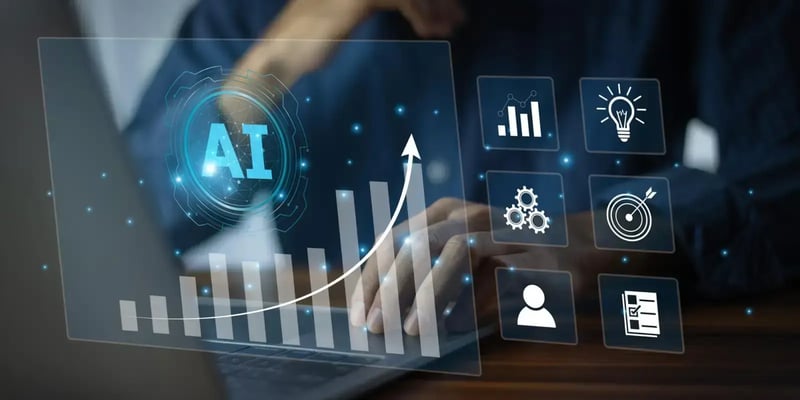
AI is changing how business decisions are made. It turns raw data into insights faster than any team could. Instead of waiting for weekly reports, leaders get real-time updates. They can see trends as they form, not after the fact.
AI tools don’t just show what’s happening—they suggest what to do next. You can run different scenarios and see how each one might play out. This helps leaders make smarter moves with less guesswork.
It also spots problems early through anomaly detection, so you’re not caught off guard when something shifts in the market or operations.
Here’s how AI shapes decision-making at a deeper level:
- AI-powered analytics find patterns in massive datasets that human teams would never catch.
- Real-time dashboards pull from multiple sources and update automatically as new data flows in.
- Scenario modeling tools help leaders test outcomes before making high-stakes decisions.
- Anomaly detection systems flag strange behavior in data, so risks get attention fast.
AI Use Cases Across Industries
Let’s look at how AI is being used across different industries today. It’s not just about robots or sci-fi tools. Real companies are using AI right now to solve specific problems, speed things up, and deliver better results.
The tools are smart, but the goals are practical. Each industry finds its own way to use AI, depending on the problems it wants to solve. Here’s a look at how AI is showing up across sectors in a way that actually works.
Retail
In retail, AI is all about giving shoppers exactly what they want without making them work for it. It personalizes the entire shopping experience, from recommendations to pricing. Inventory is another big one.
Stores no longer have to guess what to stock. AI uses buying patterns to tell them what will sell and when. Customer service is changing too. AI-powered chatbots are now the first point of contact and often handle the entire issue.
- AI recommends products based on real-time behavior, not just past purchases.
- Dynamic pricing tools adjust prices based on demand, competition, and stock levels.
- AI tracks buying trends to manage shelf inventory more accurately.
Finance
Finance companies use AI to reduce risk and move money faster. Fraud detection is a big focus. AI spots suspicious transactions within seconds by learning patterns in real-time. In wealth management, robo-advisors adjust portfolios based on market shifts. Credit scoring is also evolving. AI looks beyond credit history and uses broader data to assess risk more fairly.
- AI models detect fraud by tracking behavioral anomalies, not just static rules.
- Robo-advisors rebalance investments based on risk and market signals.
- Credit engines evaluate borrower risk using social, transactional, and alternative data.
Healthcare
AI in healthcare supports doctors, patients, and administrators. It reads X-rays, helps diagnose conditions, and even predicts patient outcomes based on data from medical histories. It also speeds up the admin side—like processing claims or managing patient records. In hospitals, AI helps manage beds, staff allocation, and even supply use.
- Imaging AI reads scans and flags abnormalities faster than human review.
- Predictive models alert staff to possible patient deterioration before it happens.
- NLP tools summarize patient records, helping doctors prep faster for consultations.
Manufacturing
AI in manufacturing means fewer breakdowns and better planning. Machines can now tell you when they’re about to fail. Production lines adjust automatically to supply or demand changes. Quality checks also get a boost—vision systems spot defects much faster than humans can. AI also helps optimize workflows, so operations run smoother and waste less.
- Predictive maintenance tools alert operators before critical failures occur.
- AI-driven quality control catches small defects through image recognition.
- Production schedules shift in real time based on availability of parts and workforce.
Logistics and Supply Chain
AI in logistics keeps everything moving. It tracks where goods are, where delays happen, and what routes are faster. Forecasting demand is another area where AI shines. It helps plan inventory better, so you don’t get stuck with too much or too little stock. Even delivery is smarter now. AI tells you the best time and place to drop things off.
- AI predicts shipping delays using weather, traffic, and route data.
- Demand planning adjusts inventory across warehouses based on sales patterns.
- Last-mile delivery systems use AI to optimize routes by the minute.
How to Successfully Adopt AI for your Business?
Having learned about AI and its benefits for business, what remains crucial at this point is to have a clear idea of how to adopt it practically into your business operations. Let’s get real about it.
Identify Business Problems for AI
Most successful AI use cases start small as it usually begins with spotting a problem or, in contrast, an opportunity. It could be too many manual entries or customer churn. You don’t need to think of a big, futuristic vision right from the start to implement AI.
If you are unsure of it, better you discuss with an artificial intelligence development company offering elaborate AI services. This gives you better clarity about its implementation.
Start with Internal Data
A lot of businesses get stuck waiting for the perfect dataset. But here’s the thing. You probably already have usable data inside your tools, emails, documents, or sales dashboards. You just need to pull it together in a usable format.
Companies offering data analytics services or data mining services help you streamline data from various sources. Remember that most AI projects don’t start with clean data but with messy, inconsistent, incomplete data that gets cleaned and structured over time. So don’t wait and start with what you have got.
Work with Domain Experts
AI adoption works best when you involve and put together different teams and stakeholders in your business. Developers can build tools, but domain experts guide what matters.
You need input from customer support teams, operations staff, or sales reps, whoever deals with the workflow every day. They will then tell you where the friction is, where things slow down, and where automation makes sense.
Run Quick AI Pilots
Instead of trying to automate everything at once, pick a small part of the process and build a simple model or system around it. If it works, then you can expand it further. If it doesn’t, you can learn from it, adjust it, and try again.
Pilots are preferably fast, cheap, and of low-risk. They help you check the feasibility of the project before you invest in it. Most teams that succeed with AI start with quick pilots then gradually scale up.
Support Human Decisions with AI
Contrary to a common idea that AI will replace all human jobs, it evolves the job that humans do. In other words, AI takes care of automating repetitive tasks and lets humans focus on demanding areas like strategizing and ideating. It rather supports and enhances the work we do. So, it becomes essential not to think of AI as a complete replacement for humans.
Improve AI with Feedback
Once something goes live, treat it like a work in progress. Ask users what works and what’s not, which helps improve the results over time. AI as a technology grows with learning and feedback. You will need to keep tweaking it as the business changes. Businesses that are willing to scale AI infrastructure over time tend to see long-term success.
To Sum Up
In a nutshell, artificial intelligence is constantly expanding the horizon of possibilities and fundamentally changing how businesses think about growth. As tools get smarter and easier to use, more companies will find new ways to apply them.
This shift is not just about doing things faster but about finding patterns that humans might miss. AI helps in spotting risks earlier and unlocking ideas that did not seem possible before. The future of business will be shaped by how well companies can use AI to stay curious and flexible.












